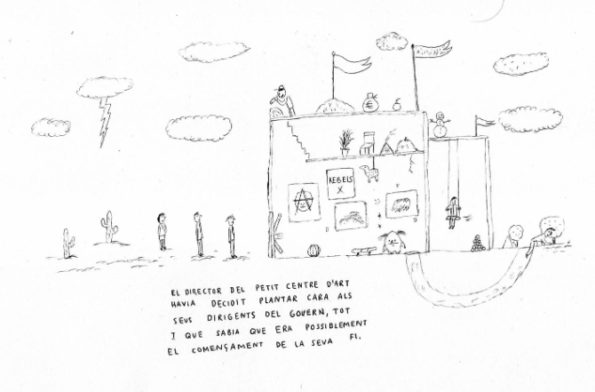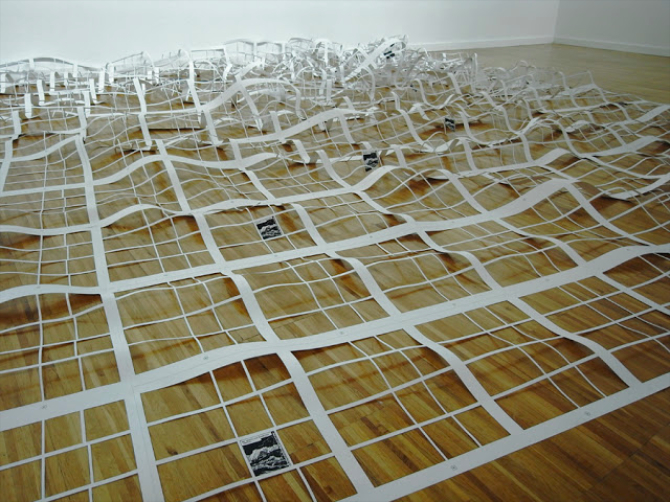Search
To search for an exact match, type the word or phrase you want in quotation marks.
A*DESK has been offering since 2002 contents about criticism and contemporary art. A*DESK has become consolidated thanks to all those who have believed in the project, all those who have followed us, debating, participating and collaborating. Many people have collaborated with A*DESK, and continue to do so. Their efforts, knowledge and belief in the project are what make it grow internationally. At A*DESK we have also generated work for over one hundred professionals in culture, from small collaborations with reviews and classes, to more prolonged and intense collaborations.
At A*DESK we believe in the need for free and universal access to culture and knowledge. We want to carry on being independent, remaining open to more ideas and opinions. If you believe in A*DESK, we need your backing to be able to continue. You can now participate in the project by supporting it. You can choose how much you want to contribute to the project.
You can decide how much you want to bring to the project.

The role and management of art within the public arena is by its very nature a delicate and much debated question, but even more so in present times. The institution, a priori guarantor of the interests of the res publica, assumes the responsibility for adjudicating resources to what is the best and most suitable, however: for whom and in what way? The museum in the art world represents the place where this mission is deposited. A mission at times impossible, that the Dutch theorist Mieke Bal explains with the concept “Framing” [[Bal, Miecke. “Enmarcado. A conceptos viajeros de las humanidades. Una guia de viaje”, 2009, Murcia]]. To frame, is to close the perimeter, and for this Bal describes the hanging of an exhibition as a “lock-in” (a closure, as much as an ambush). That is to say the context –the museum, the architectures, its agents, the collection… -, entraps the works within processes of signification in a particular mise-en-scène, orchestrated by the institution’s web of interests. The first piece that we find in the exhibition space of the biennial is a paradigmatic representation of the ambush. The cut out and mounted comic vignettes by Martin Vitaliti, are the threads behind this network, practically devoid of image and text, they are proposed as snares that have liberated the comic to ensnare art.
 The Leandre Cristòfol biennial of Lleida, that can be visited at the Centro de arte La Panera in Lleida until 28 April, doesn´t produce its own work, like other biennials, so much as it acquires work that has already been produced. Alongside the traditional labels with pedagogical aims that describe the works, there are a few little labels that announce the pieces as “Work Acquired”; these little notes, with just two words, are what immediately situate the works and their creators within the artistic stratosphere. The museum exercises a legitimating power, determining who are the winners; it is not innovative, no risks are taken, so much as by pronouncing itself in favour of artists with a certain trajectory in emerging or more consolidated circuits, it confirms their general interest.
The Leandre Cristòfol biennial of Lleida, that can be visited at the Centro de arte La Panera in Lleida until 28 April, doesn´t produce its own work, like other biennials, so much as it acquires work that has already been produced. Alongside the traditional labels with pedagogical aims that describe the works, there are a few little labels that announce the pieces as “Work Acquired”; these little notes, with just two words, are what immediately situate the works and their creators within the artistic stratosphere. The museum exercises a legitimating power, determining who are the winners; it is not innovative, no risks are taken, so much as by pronouncing itself in favour of artists with a certain trajectory in emerging or more consolidated circuits, it confirms their general interest.
It’s just that “the museum always arrives late”. This phrase pronounced in a lucid moment by Cristina Gómez, magnificently describes the situation of this biennial that is tied to the objective of acquiring works to build up the collection. It confines its role to the intuitive choice of a few pieces that will one day remind us of “those that were”, converting the visit to the museum in a futuristic historical experience: we’re seeing what the institution wants to be understood and remembered as contemporary Catalan and Spanish art, in the future.
But the current situation of public resources doesn’t facilitate the objective proposed by the Biennial, and La Panera also expresses the difficulties they are facing: “[art centres] see how works slip through their hands to enter into the art market with no possibility of retaining them.” Retain them!
The concept of the museum as a freezer is not my idea. Oriol Vilanova has various pieces exhibited in this edition in La Panera, amongst which are ‘Mausoleums’, a very opportune title for this collection of postcards of old museums and curiosity cabinets. But the project that he made in La Virreina, “They can’t die” of 2011, expresses this idea much more specifically: a dialogue between three characters who seek immortality W. Disney, Lenin and Dalí. Three characters who, like the works, are dead. Or again following on from Bal, the museum becomes an ambush, it concedes immortality and as such its content is dead.
Any way, and as the museum itself expresses, with its protests, the situation is changing. The legitimizing function of the museum seems to be diminishing in consonance with the institutional crisis and the canon of place is also changing, maybe to return it again to beyond the institution. The drawing by Quim Packard that heads this text is a fantastic illustration of this situation, one that we need to pay close attention to.

Caterina Almirall has only just been born into this world, but has lived in others, in similar parallel worlds, both liquid and solid. From each she has learnt something, and forgotten something else. Learning to unlearn. In all of these worlds she has been caught up in a web that interweaves everything, some call it ’art’…Entwining, unravelling, weaving and destroying this labyrinth has been her occupation in each one of these planets, and she fears that it will be the same in each of the ones to come.
"A desk is a dangerous place from which to watch the world" (John Le Carré)